Building the Future Workforce at Rockwell’s Automation Fair
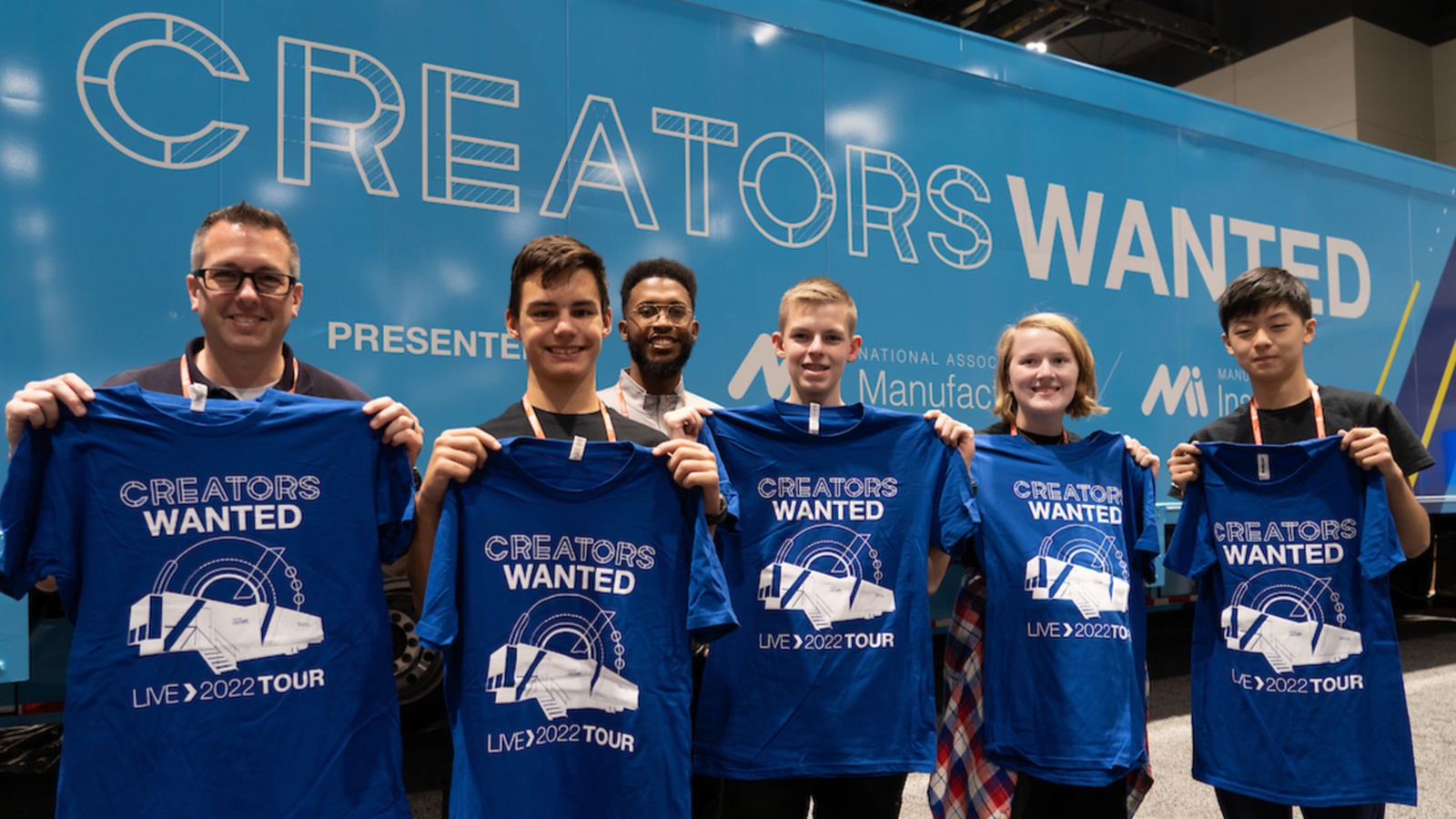
Automation isn’t just changing the manufacturing industry; it’s enabling human-centric progress in tackling the industry’s workforce crisis.
In action: As part of the Automation Fair in Chicago last week, more than 15,000 attendees got to see how manufacturers—and companies like Rockwell Automation—are providing solutions to the shortage, which could reach 2.1 million unfilled jobs by 2030, according to research from the Manufacturing Institute (the workforce development and education partner of the NAM) and Deloitte.
- Rockwell Automation brought the Creators Wanted Tour, a project of the NAM and the MI, to its Automation Fair, giving students, parents, educators and manufacturers the chance to see firsthand how digital transformation and new technologies are supporting careers and opportunities in modern manufacturing.
- The tour’s much-heralded immersive experience, along with displays and programs featuring experts from the MI and the Manufacturing Leadership Council (the digital transformation division of the NAM), gave attendees insight into the pathways and support available in the industry.
- FactoryFix, the official recruiting partner of Creators Wanted, was also on hand to showcase its manufacturing talent platform for job seekers—and manufacturers searching for a one-stop recruiting solution.
Changing perceptions: Creators Wanted aims to shrink the workforce gap by dispelling myths about automation and attracting the next generation to manufacturing jobs. It’s seeing impressive success, MI President Carolyn Lee said during a session at the event.
- “Today 40% of parents have a positive perception of manufacturing,” Lee said, citing a recent joint Deloitte–MI study. “And what we’re finding is that parents see these are durable careers with great possibility and opportunity, and they’re encouraging their children to consider them.”
Digital help: “Digital is going to help manufacturers deal with their workforce issues because it’s going to not only help change the perception of the industry, but create new jobs going forward, particularly in math-intensive areas like data analytics and artificial intelligence,” said MLC Vice President and Executive Director David Brousell.
- Brousell cited the MLC’s “Manufacturing in 2030 Project,” saying, “We have to think about digital transformation as human-centric digital transformation—because we’ve got to bring the technology and the people together simultaneously to have an effective transformation.”
Impressive results: Since it began just more than a year ago, the Creators Wanted Tour has seen more than 8,000 students pass through its immersive mobile experience, where more than 75% of attendees leave with a significantly improved view of manufacturing.
- More than 510,000 students and career mentors have also signed up to learn more about modern manufacturing careers.
- Creators Wanted has recruited successfully both mentors and mentees for the mentorship program of Women MAKE America, an MI initiative that aims to close the gender gap in manufacturing.
- The Automation Fair offered more than 150 interactive sessions on the newest industrial solutions and best practices, and more than 200 companies exhibited across 200,000 square feet at Chicago’s McCormick Place.
Media mentions: The fair and Creators Wanted’s presence drew a slew of media coverage, including from “Morning in America” with Adrienne Bankert, “The John Howell Show” on WLS-AM, Univision Chicago and suburban Chicago’s Daily Herald.
- In addition, the Daily Line published an op-ed on the future of manufacturing by NAM President and CEO Jay Timmons and Rockwell Automation Chairman and CEO and NAM Executive Committee member Blake Moret.
The last word: “As the world’s largest company dedicated to industrial automation and digital transformation, Rockwell is always looking toward the future of manufacturing,” Moret said. “Campaigns like Creators Wanted are critical to recruiting the best future talent to create a thriving workforce.”
Talking Cybersecurity with NAM COO Todd Boppell

What should manufacturers know about cybersecurity threats? NAM COO Todd Boppell recently appeared on Mandiant’s “Defender’s Advantage Podcast” to explain how cyber criminals are targeting manufacturers today and what companies can do to protect themselves. Here’s some of his advice.
The threat today: While cyberthreats are nothing new, in recent years there has been a sea change, Boppell said.
- “I think what’s really changed in the past five years, especially—it probably started in the past 10, but it’s massively accelerated—is that cybercrime as a business model is on the rise,” he said.
- “A lot of the bad guys, whether their motivations are political or purely economic, have realized that ransomware and other forms of pure disruption are sometimes just as helpful or just as lucrative as stealing any sort of intellectual property.”
Manufacturing as a target: Manufacturers get victimized by ransomware attacks “because manufacturing is one of the least tolerant industries of any sort of downtime,” Boppell continued.
- “Over the past five years, manufacturing was always in the top three [sectors targeted by cyber criminals], typically with medical and financial services … but really over the past 18 to 24 months, all the data I have seen says that manufacturing has jumped to number one and has stayed there.”
What small businesses need to know: Small businesses may believe that they are beneath notice for cyber criminals, but that’s not the case, said Boppell.
- Once they come to terms with that depressing reality, small companies should take a look at their staff and
 operations, he said. “Do they have the talent on staff to understand what they should do, what their risks are, which systems they currently have that need to be addressed? Do they understand all the acronyms at play? Do they understand the different threat vectors?”
operations, he said. “Do they have the talent on staff to understand what they should do, what their risks are, which systems they currently have that need to be addressed? Do they understand all the acronyms at play? Do they understand the different threat vectors?”
- And last, once the company generally knows what it’s doing and perhaps has some IT support, it should consider its budget, and how it can “get the most bang for its buck.”
What large businesses need to know: “Larger companies want to be helpful, and they want to help secure their supply chain partners, because it is absolutely in their best interests. … However, they are unbelievably busy just protecting their own boundaries and just worrying about all the attacks they’re facing,” Boppell said.
- “And of course, it’s always a little bit frustrating for smaller companies to have a larger company try to tell them what to do … so you have to really manage those relationships and figure out the right way to go in and help.”
The most important thing: “The number-one thing I’m trying to get through, and the number-one myth I want to dispel, is that a lot of small manufacturers believe that … they have no IP to protect,” said Boppell. “Maybe they make screws and fasteners, or maybe they make mattresses or whatever. … They feel like cyber is not a big deal for them.”
- “What we’ve seen with ransomware is that’s absolutely not true. Their ransomware risk is just as high as anyone else’s because they can’t tolerate downtime. And if they haven’t taken the steps to secure their networks and their equipment, then they’re going to be even more prone to falling victim to ransomware.”
Listen to the whole thing: You can find the entire interview with Boppell here.
Protect yourself: Interested in safeguarding your company? NAM Cyber Cover was designed specifically to give manufacturers and their supply chains enhanced risk mitigation and protection. Find out more here, and check out this webinar on the state of cybersecurity for manufacturers.
Fostering a Diverse, Inclusive Culture at Smithfield
When it comes to diversity and inclusion, Smithfield Foods puts its commitments into action.
The world’s largest pork processor has committed to measurable increases—of 35% and 30%, respectively—in the hiring and promotion of women and individuals in underrepresented groups. And it’s pledged to do it all by 2030.
2030.
Bridging a gap: In September 2020, the Virginia-headquartered manufacturer launched its Operations Leadership Program, created to develop a strong pipeline of diverse talent to fill future management roles.
- “We lead with data. And our data shows there’s a gap in diverse representation between production and management,” said Smithfield Foods Manager of Diversity, Equity & Inclusion Jessica Jones. “The OLP provided us an opportunity to track data on team members, their promotion opportunities, how they’re elevating within the company with a commitment to monitor year-over-year data three years after program completion for each cohort.”
- In just over two years, the program, which garners participants through applications, has seen 132 graduates and nearly 50 promotions.
Providing encouragement: Ironically, many of the same employees the OLP was designed to help were initially reluctant to apply, Jones said.
- “We did focus groups and what we realized is, those who weren’t applying were women and people of color,” she said. “They shared, ‘I don’t think it’s for me,’ and when we heard that, we realized it meant, ‘I never saw myself going higher than my current opportunity.’”
- Smithfield’s leadership began to strategically target their communications to specifically focus on these employees and encourage them to consider the program. “That’s when we started to see the uptick in more women and people of color applying,” Jones said.
Other D&I initiatives: To reach its lofty 2030 diversity and inclusion goals, Smithfield has deployed other programs, too, including the following:
- Smithfield’s Farmer Diversity Program, which aims to increase the number of Black and minority hog farmers in the company’s supply chain;
- A Future Leaders Program that gives scholarships and career opportunities to rising high school seniors through summer internships to increase diversity in leadership;
- An expansion of the Smithfield Foods Scholarship Program for eligible dependents of Smithfield employees so that it includes historically Black colleges and universities; and,
- A supply-chain initiative in which the company has committed to increasing its production-facility spend with minority-owned businesses by 14% by 2025.
The company has also signed NAM’s Pledge for Action, in which manufacturers commit to 50,000 specific actions to increase diversity and inclusion.
The last word: “I have seen this company change and evolve in such a wonderful way,” Jones said. “We now have opportunities to elevate and expose our employee base to Smithfield’s leadership—making sure they have a touch point, a way to connect. Our leadership wants to know how they are doing, prevalent challenges and support needed. The change has been so encouraging.”
“Cybersecurity Finds You”: An Interview with Rockwell Automation’s CISO

When asked how she got into cybersecurity, Nicole Darden Ford replies “cybersecurity kind of finds you.” The new chief information security officer at Rockwell Automation began her career in the military, where she first got into cybersecurity, then created a cybersecurity program for the U.S. Department of Agriculture before taking several leadership roles in the private sector.
Today, her advice for companies is surprisingly similar: cyberattacks will find you. As she puts it, “It’s not if, it’s when. And it’s not one time, it’s several.”
So how should manufacturers prepare for these threats? We spoke to Darden Ford recently about her recommendations, as well as Rockwell’s efforts to safeguard its own supply chain and provide services to other companies.
The current situation: “Manufacturers account for 65% of industrial ransomware last year. We’ve seen an unprecedented number of attacks, and we’ve seen attackers focus on OT,” Darden Ford says. She predicts the attacks on OT will only escalate.
- Meanwhile, many manufacturers have a clear strategy for IT, but they have not given as much thought to protecting their operational technology. Yet, as machines get more connected, their operations may become more vulnerable—especially as companies try to integrate legacy systems that weren’t “meant to be connected or patched.”
- In addition, “because we are so connected, there are third-party risks,” Darden Ford says. Small manufacturers may be more inviting targets for hackers than they realize, since their systems could provide a back door into the networks of their larger clients.
- On the plus side, manufacturers are getting smarter in building their defenses, she says. And that’s where Rockwell comes in.
Rockwell’s role: Rockwell aspires to become a “trusted advisor” to companies seeking cyber defenses, says Darden Ford. It already manufactured OT, so moving into cybersecurity for such equipment was a natural next step.
- Its partnerships with other firms, including Dragos, CrowdStrike, Cisco and others, allows
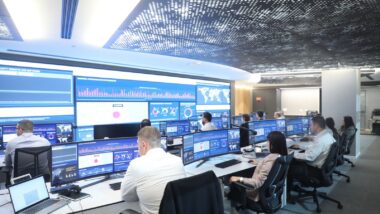 Rockwell to offer bespoke cyber monitoring and other services to its clients.
Rockwell to offer bespoke cyber monitoring and other services to its clients. - These services include penetration testing, threat detection and response and an OT “SOC”—i.e., a security operations center, which monitors threats to clients’ operations remotely.
How it works: “We have an OT cybersecurity roadmap—it starts with an assessment in your specific OT space, then walks through potential risks,” Darden Ford says. (See the end of this article for her detailed description of this roadmap.)
- The process includes building an “asset inventory, as you can’t protect what you don’t know.”
- “Then we talk about ways you can reduce your attack surface,” Darden Ford continues. “This is about segmentation. We help organizations divide their network into different domains. If you have ransomware or malware that propagates very quickly, then you have the opportunity to quarantine it.”
- In addition, the roadmap helps companies decide which tools and resources to use. For OT, you need to use very passive systems that don’t interfere with “getting the product out the door,” Darden Ford says.
After this process is complete, Rockwell’s SOC helps clients stay safe and hone their responses to real attacks.
- The SOC keeps eyes on a company’s operations remotely, notifies it of breaches within the plant network and helps it decide which threats to tackle. As Darden Ford says, the SOC stands in for the teams that companies would otherwise have to hire themselves.
On-site resources: Manufacturers can tap their existing staff to work on cyber defenses, including with offsite monitors. Darden Ford recommends drafting “the plant engineering team, along with the IT team,” who would have the knowledge and resources required.
A community effort: Large manufacturers should help educate small manufacturers on cyber issues, says Darden Ford.
- “We have a lot of suppliers, so to mitigate third-party risk, we provide more awareness about OT and advice about upping their cyber hygiene. We work closely with suppliers and do a lot of knowledge sharing,” she says.
Collaboration at the top: In addition, it’s also beneficial for CISOs and manufacturing leaders to consult their peers in what Darden Ford calls “mastermind sessions.”
- These conversations have provided her with “a lot of insights and data,” she says. She gets indispensable input on “strategies, frameworks, journeys and roadmaps,” as companies try to find their way through this cyber landscape together.
The bottom line: When asked what she says to companies that doubt the need for cyber protections, Darden Ford has a simple answer: “You wouldn’t drive your car without insurance—that’s what this is.”
- “What used to be optional is becoming mandatory,” she adds. “For small or midsize companies, you are still going to have to report” back to your large customers, many of whom require stringent protections of their suppliers. Those requirements will only get “more and more rigorous over time,” she warns.
- In other words, however you choose to do it, “you need a plan.”
The Roadmap
Darden Ford supplied us with her account of Rockwell’s cyber roadmap for its own suppliers, below. “The playbook aligns with the NIST framework, showing you step-by-step how to audit your current security state, identify gaps and take a proactive approach to mitigate risk,” she says. Here is her account of the key steps.
Step #1: Discover
- Know where you stand. Conduct a security and risk assessment—log all issues and review progress against findings.
- You can’t protect what you can’t see. You must gain a full understanding of what network assets you have on your plant floor and their current state. Start by conducting extensive network discovery and asset inventory.
Step #2: Remediate
- Work with stakeholders to prioritize assets and organizational risk levels. Take the necessary steps to eliminate, upgrade or replace unneeded, unused or unsupported OT applications and infrastructure. This will look different for every organization based on what you discover in Step #1.
Step #3: Isolate
- Establish a perimeter by physically and logically segmenting your networks. Put up a firewall and establish internal and external cybersecurity policies to protect your OT assets. Set up an on-premises industrial data center to encapsulate critical applications inside the protected OT network.
- Secure endpoints with security software on plant floor assets.
- Enable third-party remote access. Third parties need access, but you must control the access and maintain visibility into what they’re doing in your network by enabling OT access controls.
Step #4: Monitor and Respond
- Now that you have a solid foundation in place, the next step is to implement OT network monitoring to provide real-time OT cybersecurity, including malicious event/asset risk alerting, network diagnostics, AI learning and KPI dashboarding. The data only works for you if you are continuously viewing and reacting to it.
- Establish an OT SOC for 24/7 real-time alert monitoring, acknowledgement and triage. Cyberattacks aren’t limited to 9–5.
- Create an integrated IT/OT cyber event response team. Define event response and isolation protocols. IT/OT must have equal involvement and buy-in for these protocols to be successful. Execute tabletop exercises to simulate attacks and outcomes.
Caterpillar Foundation Helps Veterans Find Manufacturing Careers
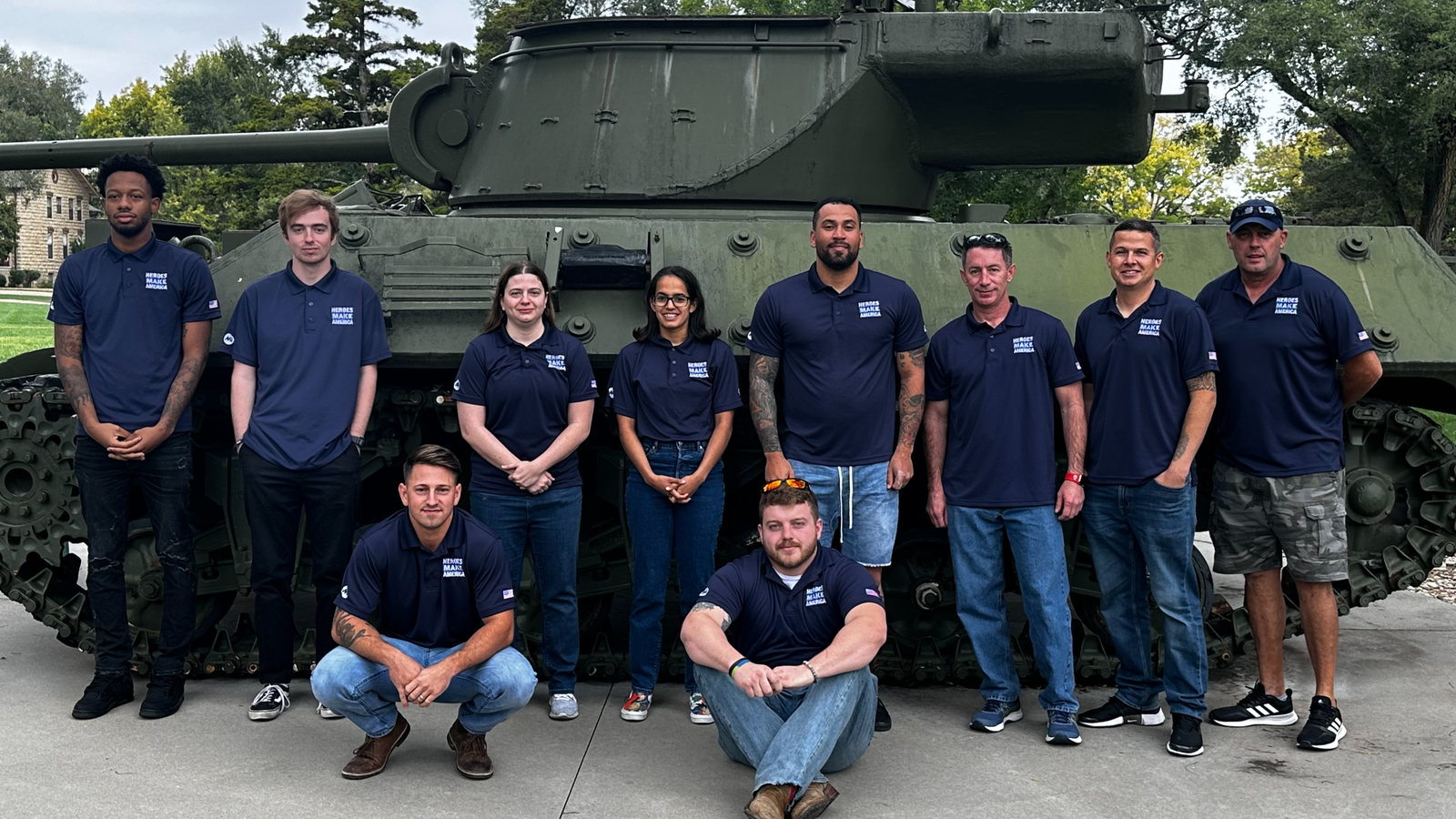
On Veterans Day, we honor the service members who safeguard our country, many of whom will go on to contribute their skills and experiences to civilian industries. Manufacturing is one beneficiary, with many veterans finding that the high-tech, mission-focused industry is an excellent home for their talents.
But how do transitioning service members and veterans find their new career paths? The Caterpillar Foundation is helping America’s heroes become tomorrow’s manufacturing leaders through its support of the Manufacturing Institute’s Heroes MAKE America initiative.
HMA provides integrated certification and career-readiness training in partnership with local community colleges to prepare transitioning service members, veterans, National Guard members, reservists and military spouses for rewarding careers in the manufacturing and supply chain industries.
Virtual training: The Caterpillar Foundation’s support began in 2021 and has helped HMA develop and launch its first 100% virtual training offering in partnership with Texas State Technical College—an exciting option for individuals across the country who might not be able to attend an in-person course.
- The program uses innovative solutions like virtual reality technology, provided by Transfr VR, in order to add a “hands-on” aspect to the students’ training for their Production Technician and OSHA 10 certifications.
- “Heroes MAKE America was great,” said Benjamin Novak, a graduate of Heroes MAKE America’s virtual training program. “The virtual self-paced program allowed me to balance class, transitioning and family life. Getting an opportunity to connect and speak with companies directly was a huge opportunity as well.”
New programs: Additionally, thanks to the foundation’s grant, Heroes MAKE America launched two new in-person training paths: a Mechatronics training program at Fort Hood, Texas, also in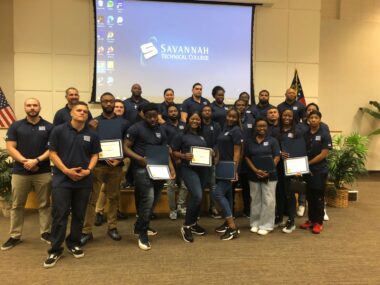 partnership with Texas State Technical College, and a Certified Logistics Technician training program at Fort Stewart/Hunter Army Airfield, Georgia, in partnership with Savannah Technical College.
partnership with Texas State Technical College, and a Certified Logistics Technician training program at Fort Stewart/Hunter Army Airfield, Georgia, in partnership with Savannah Technical College.
- Together, the three new training offerings (the two mentioned above and the virtual option) have graduated 133 participants as of November 2022, with another 40 participants expected to graduate in December.
- “Heroes MAKE America is a great program that wants to see veterans succeed,” said Anna Rabago, a graduate of the Mechatronics training at Fort Hood, Texas. “They helped mold me into a great candidate for manufacturing while earning seven manufacturing certifications. The instructors are subject-matter experts in their field and are willing to work early or late evenings to benefit the soldiers.”
An impressive year: The HMA program is on track to graduate 303 members of the military community across all 6 training sites in 2022, bringing the total number of graduates since the 2018 inception of HMA to 957. The training sites include Fort Hood, Texas; Fort Stewart/Hunter Army Airfield, Georgia; Fort Riley, Kansas; Fort Campbell, Kentucky; Fort Bragg, North Carolina; and the 100% virtual option.
The last word: “HMA provided me with all the tools that I needed to thrive as a civilian,” said Tillman Harris, a graduate of the Production Technician training at Fort Bragg, North Carolina. “They provided industry training, résumé assistance, interview prep and much more. Trust in yourself and have confidence in everything you do. HMA is a program that cares about us and wants us to succeed.”
Learn more: Find out more about Heroes MAKE America here.
Cornerstone Building Brands Creates a Diverse, Inclusive Workplace
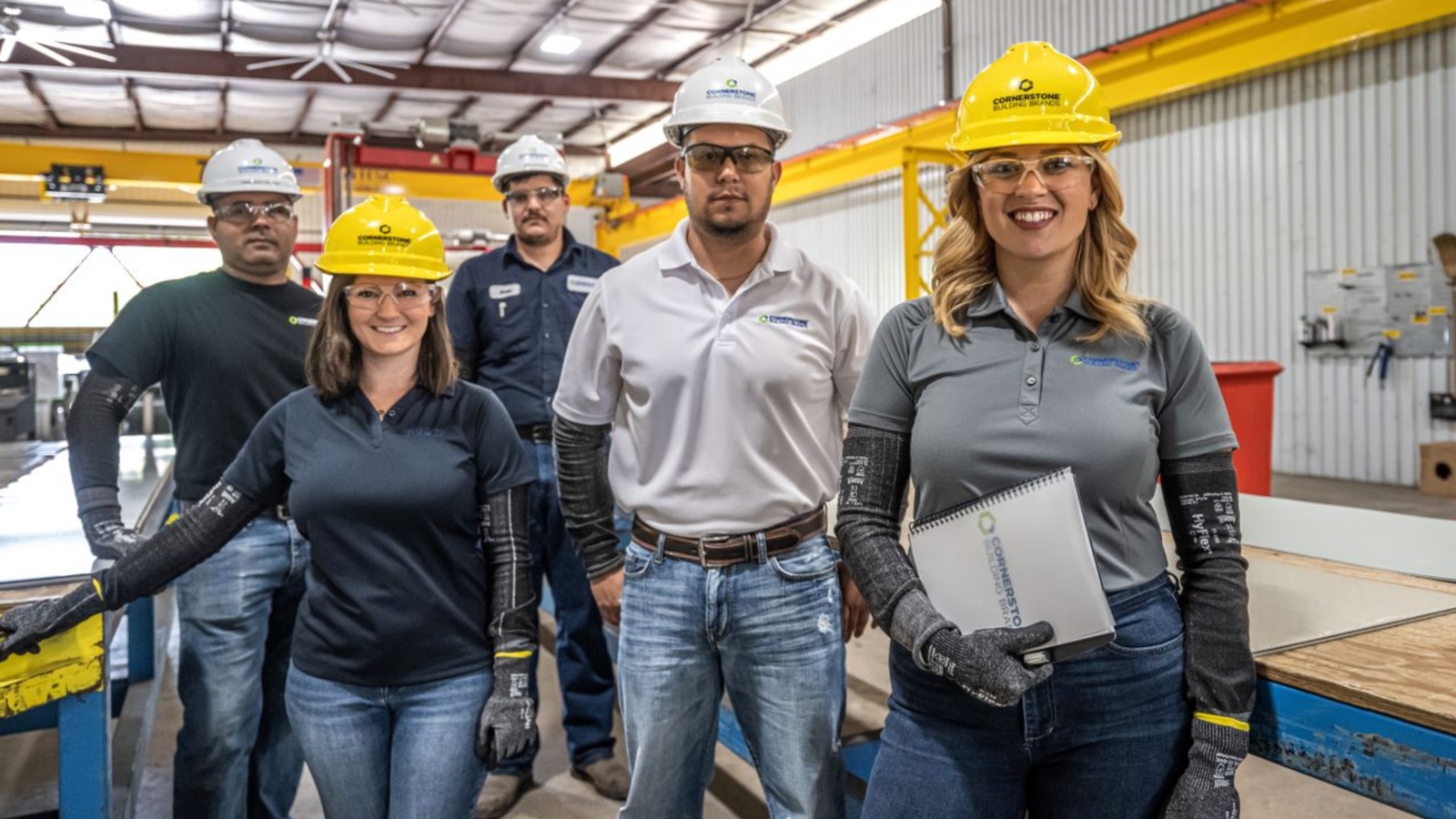
To Carol Enneking, creating a diverse and inclusive workplace is less of a race to a finish line than an ongoing expedition that never really ends.
A journey: “Realizing a workplace culture where DE&I is not just prioritized but celebrated was a critical aspiration,” said Enneking, Cornerstone Building Brands’ vice president of talent management, learning and diversity. “It’s a journey to get there, but not a destination where you will ever arrive to stay. You expect your workplace to evolve as highly diverse and inclusive, but you can always do more,” she said.
Taking action: Cornerstone Building Brands, a leading manufacturer of exterior commercial and residential building products, has been taking decisive actions to increase diversity and inclusion since the company’s inception in 2018. Extra focus has been given to its DE&I strategy since 2020, shortly after the murder of George Floyd, when the company began activating its DE&I commitment with employees.
- “I spent a great deal of time on this in 2020,” Enneking said. “We had a group of executives that mobilized to provide a [company] response. It was a bit of a new frontier for us, especially as a new company, deciding to speak up and send a message about this. We worked hard to set the right tone.”
- It also became clear that a more focused DE&I approach would help the company in these situations and in the day-to-day creation of an inclusive culture.
- Now, the business has a DE&I team at the ready to drive their strategy forward: its DE&I Council, which meets monthly and focuses on strategic alignment; communications; coaching and training; and metrics and governance.
More diversity in management: Cornerstone Building Brands aspires to build a more diverse and inclusive organization that reflects the diversity of the communities where it operates. It is also focused on increasing the number of diverse employees in Cornerstone Building Brands’ management teams.
- “We have a very diverse frontline population,” Enneking said. “It’s close to 50% frontline employees of color and about 28% women, but we see those numbers decrease in management. The challenge is to bring that same representation into the management.”
- To engage employees in creating an inclusive culture, the DE&I Council disseminated a survey that led to the creation of four distinct employee resource groups: Women!, Patriots, Pride and Unity. All meet regularly to learn together, plan events, address specific employee concerns and foster mentoring opportunities.
- Another way forward has been the company’s 2021 signing of the NAM’s Pledge for Action, in which “manufacturers commit to taking 50,000 tangible actions to increase equity and parity for underrepresented communities, creating 300,000 pathways to job opportunities for Black people and all people of color.” In the first year after signing this pledge, Cornerstone Building Brands took 44 tangible actions toward achieving its commitment to the pledge and its broader DE&I goals.
How far they’ve come: All of Cornerstone Building Brands job descriptions now contain a DE&I statement that highlights its commitment, and the company recently published its first environmental, social and governance report, which included DE&I initiative details.
- Cornerstone Building Brands has worked to ensure that its “recruitment processes are bringing in diverse candidates” and that there is pay-scale parity, particularly in direct manufacturing roles, Enneking said.
- The company also has a reporting mechanism in place for all employees to make leadership aware of potential inclusivity violations or other issues.
- In addition, the manufacturer has instituted manager and employee DE&I learning modules, which comprise unconscious bias and inclusive leadership training led by professional facilitators, as well as accountability measures.
Making an impact: The work has started to pay off, said Enneking, who added that “there has been an increase” in diverse representation among Cornerstone Building Brands’ management. President and CEO Rose Lee, the first Korean American woman to head a Fortune 1000 company, was recently named a Pinnacle Award recipient by the Asian American Business Development Center. The company also recently hired two new female business unit presidents.
- The company has also broadened its search parameters in recruiting, Enneking said. “Diversity has many facets, many of which are not visible. We value diversity of thought and perspectives and are more willing to bring in people who may not have been in [our industry] all their lives but who can learn quickly and have transferable skills. In fact, those hires usually bring us a lot of ideas that we didn’t have. Sometimes you need to look outside to get those.”
How Managers Can Produce Top-Notch R&D

As innovation in manufacturing continues at breakneck speed, research and development is more important than ever—but it requires outstanding managers to make it all happen.
So how do these managers get the education and insights they need? The Innovation Research Interchange, a network of cross-industry innovators that the NAM combined with earlier this year, has an answer: an executive management course called Shaping Innovation Leaders.
The gist: Co-hosted by the Kellogg School of Management at Northwestern University, the course provides a forum for strategic thinking, education and networking for technology leaders from around the world.
- In 2023, it will take place on May 13–19 on the Northwestern campus in Evanston, Illinois.
The details: The goal of this seven-day program is to develop midlevel managers into leaders for their companies, by covering topics including:
- Evaluating financial results;
- Segmentation, targeting and positioning;
- Growing and defending your brand;
- Legal and strategic investments;
- Building a better network; and
- Negotiating skills and strategic alliances;
Who’s involved: To get a sense of this event’s caliber, look no further than the attendees from the 2022 course.
- They hailed from a wide range of companies, including manufacturers such as Mars, Procter & Gamble, John Deere, Hershey, NatureWorks, Air Liquide, Kimberly-Clark Corporation, Sherwin-Williams and many, many more.
The reviews are in: Participants in the 2022 course were enthusiastic about what they learned and experienced.
- “[I’m] really super impressed with the program, soup to nuts,” said John Deere Manager for Global Strategic Communications & Culture Jacqueline Kiple. “One of my favorite aspects of the program was really getting a chance to think about our business a little bit differently … to take a step back and think about the higher-level impacts that affect decision-making in our respective organizations.”
- “What I really enjoyed about this course was first and foremost the esteemed professors. … [The course] gives you a really big view of all the information you need to really understand business and understand the decisions that are getting made,” said Sherwin-Williams Associate R&D Director Tony Rook. “It gives you that top-level view of how you add value to [your] organization.”
Get involved: Registration is now open for the 2023 course. You can find additional information and register here.
Manufacturers Keep Pace with Technology Deployment
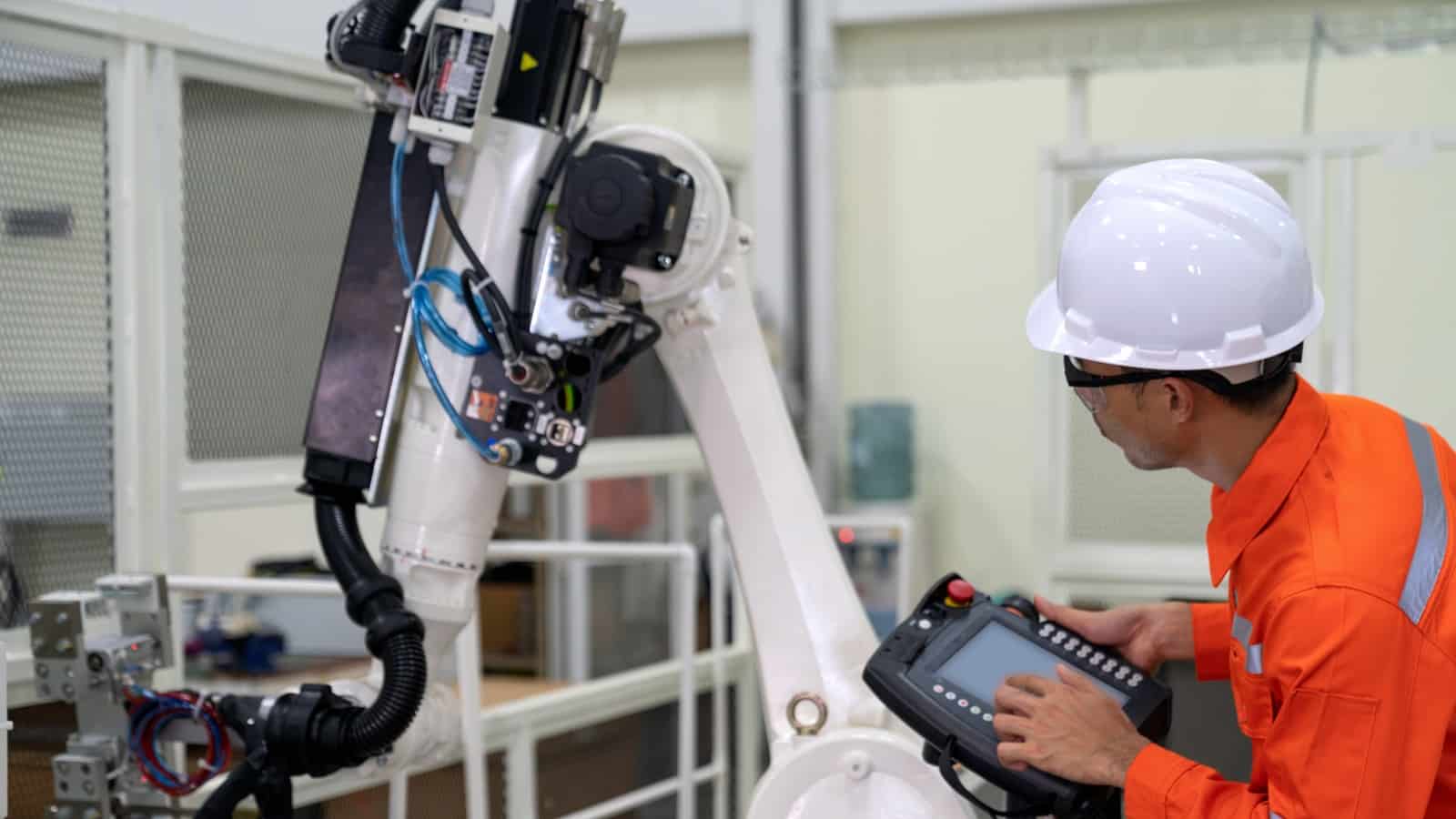
Manufacturers are staying on top of the tech game.
That was among the chief findings of a new polling conducted by the Manufacturing Leadership Council, the NAM’s digital transformation division. The annual Transformative Technologies in Manufacturing research survey aims to reveal data on current realities and expectations for manufacturing in the near future and in the years to come.
Rate of adoption: The most surprising data point was that 89% of respondents said they expect their company’s rate of adoption of disruptive technologies to increase over the next two years. That figure is up from 51% just one year ago.
Why disruptive technology? Reducing costs and improving operational efficiency were the most-cited reasons for investing in digital tech, with 83% of respondents identifying these as important motivations.
- Improving operational visibility and responsiveness came in second, at 61%.
- Other reasons include increasing digitization (40%), creating a competitive advantage (36%) and improving quality (30%).
Top near-future trends: Digital-twin modeling and simulation software, augmented and virtual reality, high-performance computing and further investments in supply chain management software will lead the next wave of investments during the coming year or two.
Not of interest: The survey found that quantum computing and blockchain technology are currently of the least interest to manufacturers.
The role of AI and ML: Artificial intelligence and machine learning usage continues to grow among manufacturers.
- Nearly 50% of respondents indicated that their companies have implemented AI, either on a single-project basis (40%) or in all factories (9%).
- About 75% said they are applying AI and ML to reduce costs and improve productivity and processes.
- Approximately 60% indicated they had used AI and ML for preventative/predictive maintenance or quality improvement.
Misunderstood metaverse: A new topic covered by this year’s survey, the manufacturing metaverse, was perhaps the least understood by respondents.
- About 38% said they were still trying to understand the technology and concept, 20% said they have no plans to adopt a manufacturing metaverse approach and 15% said they didn’t know how to respond to the question.
The last word: “Manufacturers are finding more use cases and business benefits for increasing their use of digital technology, and the pace of adoption is accelerating,” said MLC Co-Founder and Vice President and Executive Director David R. Brousell.
- “The research confirms that manufacturing is headed for an agile, connected and collaborative future driven by technology and fueled by innovation.”
How Adaptive Skills Can Play a Pivotal Role in Building the Manufacturing Sector of the Future
This new research from MI and EY on adaptive skills in the manufacturing workplace. What are adaptive skills? Simply put, they are skills or traits that enable individuals to transform their abilities as their demands and environment change. There is a need for broader and evolving skillsets in the manufacturing sector and for building a workforce motivated by opportunities for growth. Doing this will help manufacturers transition to workplaces to a point where forward-thinking, engaging, and digitally enabled work is the norm.
Future Skills Needs in Manufacturing: A Deep Dive
The Manufacturing Institute, in partnership with Rockwell Automation and PTC, released a forward-looking study on where the manufacturing sector will be headed over the next 5 to 10 years and how those changes will impact the necessary skills that will be required of employees. More advanced processes and innovations will necessitate enhanced data and technological skills. As a result, manufacturers will need to support or provide new elements of continuous learning for existing employees, and the skill sets of new employees will need to become increasingly more sophisticated. At the same time, soft skills will always be important. This need for advanced skills sets for modern manufacturers comes against a backdrop of a tight labor market, complicating the search and heightening the already fierce competition for talent.